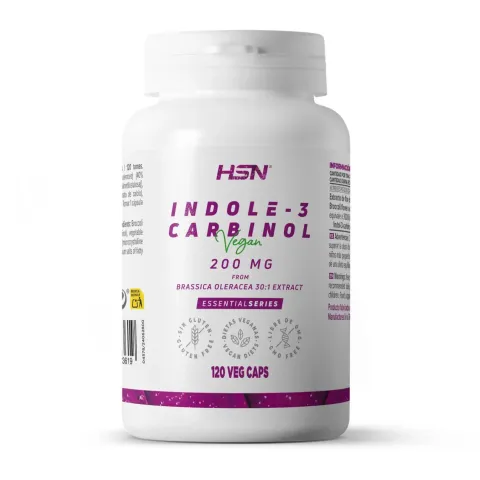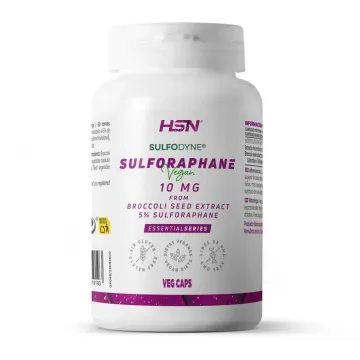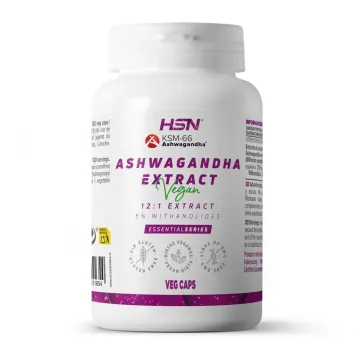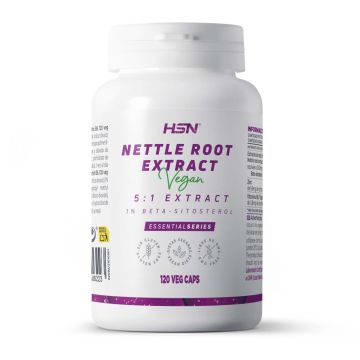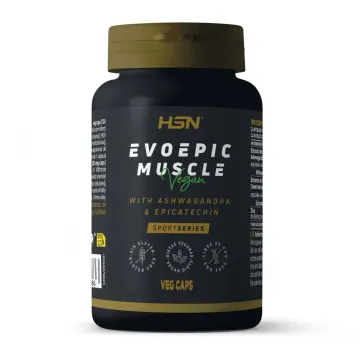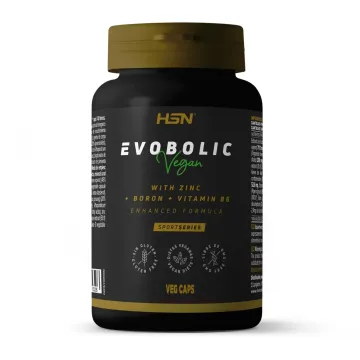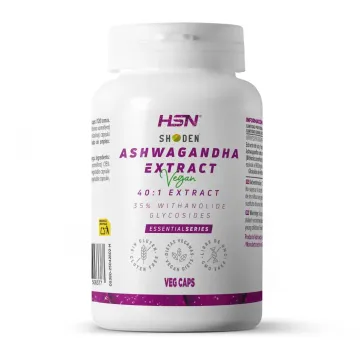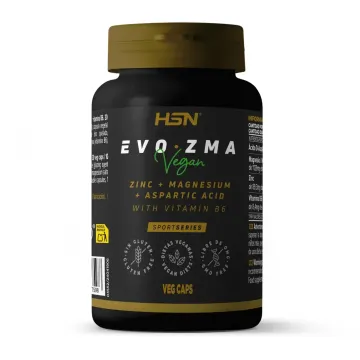- 200mg of natural Indole-3-Carbinol (I3C).
- A native compound from broccoli with significant scientific recognition.
- Derived from highly concentrated broccoli flower extract.
- 30:1 extraction ratio - 1000mg equals over 30g of Brassica flower.
- Standardised to 40% I3C - 200mg guaranteed per capsule.
- GMO-Free - Suitable for vegan diets.
I3C - One of Broccoli's Key Compounds
Indole-3-Carbinol 200mg by Essentialseries is a food supplement made from Brassica oleracea (broccoli) flower extract, standardised to 40% I3C: One of the plant's most well-known compounds.
I3C is a precursor of DIM (Diindolylmethane) and a metabolite of Glucobrassicin, a glucosinolate found in broccoli and other cruciferous vegetables. Indole-3-Carbinol has garnered a lot of recognition over the years thanks to extensive scientific research aimed at uncovering the key elements in cruciferous vegetables, which have made them one of the healthiest vegetable options for consumption.
HSN's Indole-3-Carbinol comes from a natural, plant-based source, not synthetic; it is GMO-free and suitable for vegan diets.
HSN I3C: Natural Source Indole-3-Carbinol
Derived from Broccoli Flower
Many broccoli-derived compounds are synthesised in a lab.
Scientists have isolated and synthetically created the same molecules naturally present in cruciferous vegetables to study their properties in ex-vivo models.
At HSN, we believe this isn't necessary. In fact, we are fully convinced that the best choice of raw material to ensure an effective and efficient intake of the compound is the extract of a plant that naturally contains it.
That's why our product contains broccoli extract, as such, 30 times more concentrated to ensure maximum effectiveness, with a minimum guaranteed content of 40%.
Highly Concentrated Standardised Extract
Plant extracts have certain factors that determine their quality, one of the most crucial being the extraction process itself.
The method and type of extraction influence their quality and concentration, and at HSN, we have specialists who study the best methods to obtain extracts of the highest quality.
Firstly, the extract we use to prepare our I3C is derived from broccoli flower:
The flower is the part of the plant with the highest concentration of these characteristic elements from the glucosinolate family and its derivatives; and broccoli is the most well-known species of the brassica family for delivering indole-3-carbinol.
We have significantly concentrated the broccoli flower, specifically: 30 times more than its native state. However, we have not used solvents that would be aggressive towards the original raw material and its phytochemical constituents; thanks to this, we have obtained a non-selective extract with a high guaranteed content of indole-3-carbinol.
Guaranteed I3C Content - No DIM or Glucobrassicin
Thanks to the careful extraction methods, the I3C content in the extract remains high and concentrated, reaching a 40% value.
This level is guaranteed across all production batches of the extract, always ensuring that every capsule contains a minimum of 40% natural I3C from broccoli flower extract.
One of the key factors in ensuring the quality of natural I3C is to make sure that when the compound is analysed, it is not mixed with other similar elements, and that when the I3C content of an extract is determined, it is not confused with glucobrassicin, for instance, which is its precursor but not the same. Just as the absence of DIM, the metabolite of I3C, is also crucial.
Our broccoli-derived Indole-3-Carbinol has been carefully analysed, ensuring it is genuine I3C, free from other compounds that could distort its actual content.
Key Features of Broccoli Extract
Broccoli is a plant known for its high nutritional value, rich in naturally occurring compounds such as glucosinolates and phenolic compounds.
Our extract, standardised to 40% guaranteed I3C, is an excellent representative of the nutritional quality of one of the most widely consumed cruciferous vegetables in the world, renowned for its unique nutritional properties.
Where Is I3C Found in Foods?
Indole-3-Carbinol is mainly found in cruciferous vegetables. You can find small amounts of I3C in:
- Broccoli.
- Cabbage.
- Brussels sprouts.
- Cauliflower.
However, to consume a significant amount, such as the 400mg daily dose recommended in our supplement, it's preferable to use a highly concentrated extract like ours, as consuming these amounts through cruciferous vegetables naturally is practically impossible due to the resistance of glucosinolate precursors to conversion, and the loss of key elements during the cooking process.
Is This Compound Researched?
Yes.
The term 'Indole', a parent compound to 'I3C', defined as 'Benzopyrroles with nitrogen at the number one carbon adjacent to the benzyl portion', has nearly 350,000 scientific references in the world's largest scientific search engine.
I3C, as part of this family, has been studied in humans for over 20 years and continues to generate scientific interest today:
- Auborn, K. J., Fan, S., Rosen, E. M., Goodwin, L., Chandraskaren, A., Williams, D. E., Chen, D., & Carter, T. H. (2003). Indole-3-carbinol is a negative regulator of estrogen. The Journal of Nutrition, 133(7 Suppl), 2470S–2475S.
- Centofanti, F., Buono, A., Verboni, M., Tomino, C., Lucarini, S., Duranti, A., Pandolfi, P. P., & Novelli, G. (2023). Synthetic Methodologies and Therapeutic Potential of Indole-3-Carbinol (I3C) and Its Derivatives. Pharmaceuticals (Basel, Switzerland), 16(2), 240.
Can It Be Used with Sulforaphane and Other Products?
Yes.
Indole-3-Carbinol is fully compatible with the use of related compounds like Broccoli Sulforaphane, as well as other elements typically associated with general health care, such as:
And many others like NADH or Lutein.
References
- Rogan, E. G. (2006). The natural compound indole-3-carbinol: State of the science. In Vivo, 20(2), 221–228.
- Kim, J. K., & Park, S. U. (2018). Current results on the biological and pharmacological activities of indole-3-carbinol. EXCLI Journal, 17, 181–185.
- Amarakoon, D., Lee, W. J., Tamia, G., & Lee, S. H. (2023). Indole-3-Carbinol: Occurrence, Health-Beneficial Properties, and Cellular/Molecular Mechanisms. Annual Review of Food Science and Technology, 14, 347–366.
- Centofanti, F., Buono, A., Verboni, M., Tomino, C., Lucarini, S., Duranti, A., … Novelli, G. (2023). Synthetic Methodologies and Therapeutic Potential of Indole-3-Carbinol (I3C) and Its Derivatives. Pharmaceuticals, 16(2).
- Wang, S., Cheng, L., Liu, Y., Wang, J., & Jiang, W. (2016). Indole-3-Carbinol (I3C) and its Major Derivatives: Their Pharmacokinetics and Important Roles in Hepatic Protection. Current Drug Metabolism, 17(4), 401–409.
 Before
Before After
After During
During Morning
Morning Afternoon
Afternoon Night
Night







